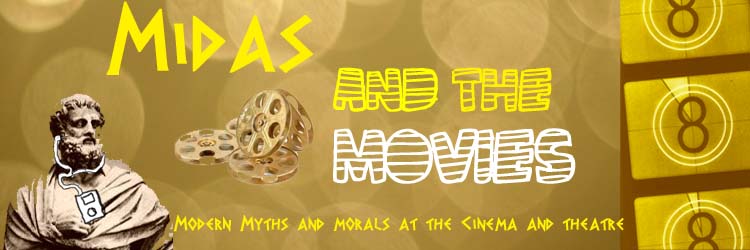Dir. Terry Zwigoff
2001
"God, it's so weird that we're finally out of high school. We've been waiting for this our whole life." So goes one of the first lines of the film, the words full of promise but the voice low and lifeless. Ghost World travels that dry, sticky post-diploma stretch of life where the oasis of graduation is revealed as a mirage.
Our desert wanderer is Enid (the believable Thora Birch). She's the kind of person who has grown to inhabit her name, valiantly sporting combat boots, cat-eye glasses, a hoard of Velma-style mini-skirts ("an original 1977 punk rock look"), and a killer sarcastic delivery. Her best friend, Rebecca (Scarlett Johannsson), is more conservative in dress, but just as sardonic in outlook. Their pastimes include stalking hapless strangers in the local diner and discussing the tragedies of their pathetic small town's populace. Together, they brave a new world--an adult world-- that doesn't seem to be so different from the one they knew before.
The film unfolds like a modernist play, achingly slow with prosaic, slang-spiked dialogue. The plot kicks in when Enid and Rebecca decide to place a prank call in response to a desperate personal ad. Their cruel joke leads them to follow the man who placed the ad, Seymour (a perfect Steve Buscemi). While Rebecca is content to balk at his misfortune, we see a stirring in Enid's eyes, a hint of interest or compassion. So begins a minimalist odyssey of unrequited love, full of awkward silence and static camerawork. Enid's quiet, steadfast pursuit of Seymour the record collector is our primary subject for the next hour, a barely-there story thread dusted with pathos.
The character of Enid is well-written, but even better played. She is the soul of the film: sharp, offbeat, and dark, but with a nearly imperceptible spark of hope underneath. She enshrouds herself in a thick wall of quirks, from a love of 60's Indian music to her choice of art subjects (Satanists and Don Knotts). Her rapport with Rebecca is icy, but Enid can't help letting her voice thrill every now and then with a bit of interest in the world around her. Birch clearly developed the guarded inner life of her character, self-consciously odd in every respect. Buscemi's character work is also masterful. He lets us see the vulnerability and painful self-awareness that Seymour goes through. Both performances are subtle and sympathetic.
Some of the film's most gleefully satirical moments come from Enid's remedial summer-school art class. Enid watches in cold horror as her teacher accepts contrived political explanations for pieces of trash as art. She bucks the system by submitting her own piece, a horrid, racist poster from the 1920's, and receives a scholarship in result.
The film is certainly crass. It is about a crass world, one in which everything is a target, and sentimentality is dangerous. It may be off-putting, but it’s real. The art direction helps capture this mood. The town is deliciously dismal. The restaurants, the mini-mart, Seymour's record room, an abandoned bus stop: all are full of an attention to detail that gives us the sense of a lived-in and hated world.
Ghost World is an expression of frustrated meaninglessness. Characters glide in and out of the story: lonely, hilarious characters, subjects of derision. So we laugh. Why? The film offers no answers. Enid's art class shows people can be manipulated into believing there is meaning in the senseless. Enid and Rebecca's activities are restless and random, coldly criticizing others and making no excuses. There is even a small homage to "Waiting for Godot" in an understated set piece with a bus stop. But at the center of the film lies the pulse of Enid's hidden heart, willing to create, fall in love, and ultimately take life-altering risks. We don't get conclusions, but we do get to know the workings of two hurting, complex people. We get to watch them itching under an existential burden. It's a wandering journey worth taking.

No comments:
Post a Comment